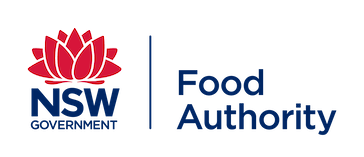Animal food processing
Animal food processing plants are facilities that process, package, store or otherwise handle meat or fish products that are not for human consumption.
This means premises where:
- meat or fish (or their products) is stored, packed, packaged, processed, treated, boned or cut up, or
- processed animal food (pet meat) is produced.
However it does not include the following:
- abattoir
- knackery
- meat processing plant
- game meat processing plant
- meat field depot
- meat retail premises (butchery)
Licensing, registration
Animal food processors need to:
- apply for a Food Authority licence online or download an application form (PDF, 418.6 KB, print and post it
- meet required standards
- prepare for regular audits.
For more see applying for a food licence.
Skills & knowledge
There are no formal food safety qualifications required for animal food processing however each food handler or person in control of a food business is required to have food safety skills and knowledge appropriate to their food handling activities.
Operators need to implement a training program in hygienic product handling.
Construction & facilities
The design and layout of the plant and its equipment needs to:
- enable the hygienic production of pet meat and pet meat products
- allow for inspection or auditing during or after production.
In addition there must be:
- adequate working space for the satisfactory performance of animal food processing and auditing operations
- adequate chiller and freezer capacity for maximum daily production and to accommodate the total quantity of product likely to be held on the plant at any one time.
Standards are specified for construction, supply of water, lighting, ventilation, hand washing amenities, storage and general operational requirements.
Full requirements are set out in:
Hygiene & handling
Operators need to implement a program of hygiene control, which includes cleaning of equipment, utensils, surfaces, protective gear and containers.
Each day, all plant, equipment and protective clothing needs to be clean before animal food processing starts.
All possible precautions need to be taken to prevent harbourage of pests and control insects, birds, rodents and other pests at the facility.
Each person involved in processing of pet meat needs to frequently (and whenever else necessary) and thoroughly wash their hands with liquid sanitiser and water.
Use of pesticides must not risk contaminating product or equipment.
Operators need to ensure that no person known to be suffering from, or a carrier of, a disease or condition that can be transmitted through pet meat works is involved in any capacity where it is possible to contaminate product.
After handling diseased or suspect material, hands need to be thoroughly washed and protective gloves washed and sanitised before further handling pet meat or equipment used on pet meat.
Requirements are set out in CSIRO Standard for the Hygienic Production of Pet Meat: PISC Technical Report 88 .
See also the factsheet cleaning & sanitising in food businesses (pdf)
Food safety controls
Food safety controls include the requirements for food handling from receipt to disposal. It also includes food recall requirements.
Record keeping
Written records allow a business to demonstrate compliance with requirements to authorities.
Operators must keep records of the source of each animal processed and each stage of processing and distribution.
Records of product batches and supply help with traceability if a recall is required. An up-to-date list of the businesses to which they supply their products, as well as which batches of product have gone where, will help in the event of a recall.
Labelling & product identification
Product must be identified by staining with the appropriate ink to clearly identify it as pet meat.
Stains and staining materials used to identify pet meat must not be removed from meat.
Testing
No routine microbiological or chemical testing of product is required of animal food processors.
Inspections & audits
Animal food processors will be routinely checked by the NSW Food Authority for compliance with requirements.
Compliance or regulatory action will be taken if required.
There are fees for audits and inspections, payable by the licence holder.
For more see audits, inspections and compliance.
Legislation & standards
Animal food processors also need to meet the requirements set out in:
- Food Act 2003 (NSW)
- Food Regulation 2015, including relevant parts of the Meat Food Safety Scheme and Schedule 5
- Food Standards Code
- Standard for the Hygienic Production of Pet Meat: PISC Technical Report 88 CSIRO
